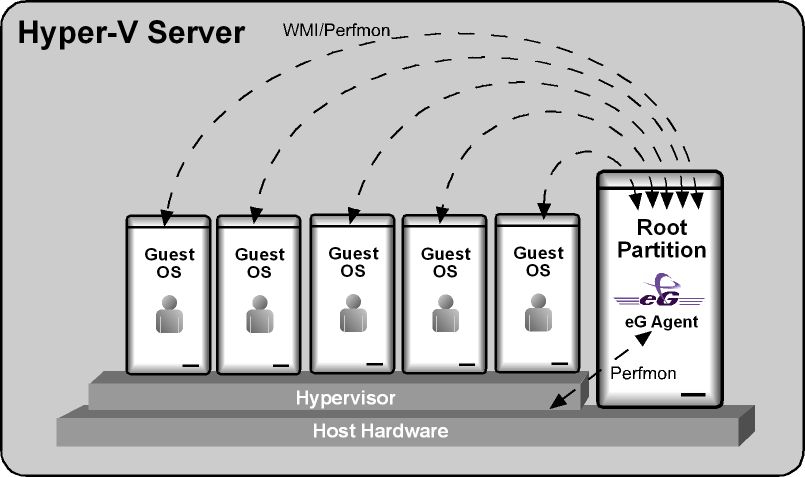Agent Deployment Model
Using eG Enterprise, administrators can manage a Hyper-V server in an agent-based manner.
The agent-based approach requires that an eG agent be installed on the root partition of the Hyper-V server. The root partition runs a Windows 2012 64-bit operating system. Therefore, to monitor the Hyper-V server, you need to install the Windows 2012 64-bit agent on the root partition. The steps for the installation are clearly laid out in the eG Installation Guide document. The agent then uses Perfmon to extract metrics from the Hyper-V host, auto-discovers the IP addresses of the guests on the host, communicates with every guest via WMI, and then collects the “outside view” metrics (see Figure 1).

Figure 1 : Agent-based monitoring of Hyper-V
Note:
The eG agent can collect “inside view” metrics from Windows VMs alone; for Linux VMs, only the powered-on status and “outside view” metrics will be available.
The eG agent then communicates with every Windows VM on the target Hyper-V host (using WMI) to obtain the inside view of the VMs. To establish this remote connection with Windows VMs, eG Enterprise requires that the eG agent be configured with domain administrator privileges. In high-security environments, where the IT staff might have reservations about exposing the credentials of their domain administrators, this approach to extracting “inside view” metrics might not be preferred. In such environments therefore, eG Enterprise provides administrators the option to deploy a piece of software called the eG VM Agent on every Windows VM, which allows the eG agent to collect “inside view” metrics from the VMs without domain administrator rights. Refer to topic for more details on the eG VM Agent.
For a detailed list of pre-requisites for monitoring Hyper-V, refer to Pre-requisites for Monitoring Microsoft Hyper-V.



